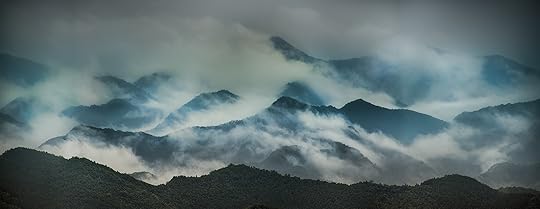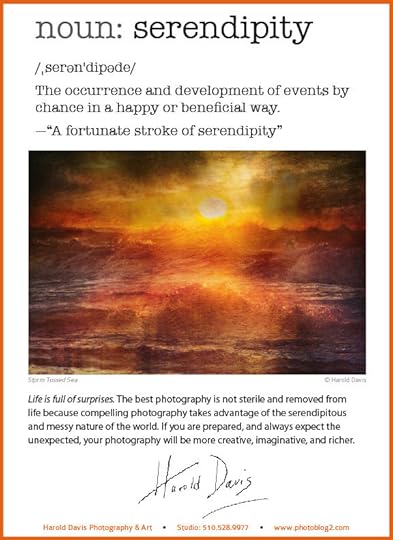Harold Davis's Blog, page 165
January 29, 2015
Pagan Goddess
With flowers beginning to burst forth in my neighborhood with all their sensual energy my thoughts turn “naturally” to the passion of nature. Nature is wonderful, nature can be fearsome, and as I have learned, nature can be utterly indifferent. When you are in its grip, indifferent nature simply doesn’t care if you live or die. I once wrote a story on this topic, Does the Wilderness Care about Me?—with the answer to the question a resounding “No.” The wilderness does not care, it just is.

Pagan Dreams © Harold Davis
These aspects of nature—beauty, awe, fear, and indifference—are like those I feel in the presence of a truly beautiful woman.
Of course, beautiful women are part of nature. But there’s a reason that many religions portray strange women deities as a force of nature, and (alternatively) a source of fear and delight. I’ve tried to show this in my Multiple Exposures series, combined with twisted and contorted references to great moments in art history.
The model and co-choreographer of this image is the talented Zoe West.
Related stories: A Rorschach for MFAs; Multiple Exposures.
January 26, 2015
Star Magnolias in Bloom Again
Much of the rest of the country braces for the worst that winter can offer, but here the star magnolias are in bloom again. The combination of strong rains in December followed by day after day of brilliant sunshine with warm afternoons have lead to floral displays bursting with energy. Later on, if we don’t get more rain, the weather may lead to drought and unhappiness. But for now, it is all fecund and gorgeous—particularly my favorite star magnolia photographed over the weekend and shown below (links are to previous-year compositions from the same magnificent Magnolia stellata bush). It grows pretty much wild alongside Arlington Avenue a few blocks from me!

Star Magnolia © Harold Davis
If you would like to learn more about my technique in creating this image, in the Bay Area I’ll be presenting on the topic tomorrow evening (Tuesday Jan 27, 2015) at the Peninsula Photo Club (download the PDF flier here). You can also learn more in my webinar recording Painting in Transparency Using a High-Key Layer Stack. I’ll be leading in-depth workshops related to photographing flowers on a light box in Heidelberg, Germany in June and at the Maine Media Workshops in August.
Exposure data: Shot as a sequence of bracketed exposures using a Nikon D810 and Zeiss Otus 55mm f/1.4 lens on a tripod. All exposures at ISO 64 and f/16, with shutter speeds between 1/20 of a second and six seconds.

Star Magnolia on White © Harold Davis
January 25, 2015
Succulent
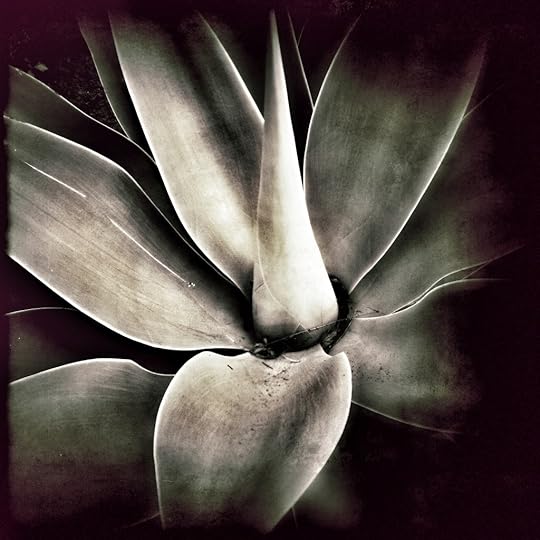
Succulent © Harold Davis
Shot along the paths of Berkeley, California with my iPhone, and processed primarily using the Snapseed app iPhone while waiting for long exposures to complete. Having a camera and a digital darkroom in one’s phone means never being bored!
January 22, 2015
San Francisco Night Photography Workshop Feb 20-23, 2015
Click here for information and registration, and here for a PDF download of this e-Card. Click here for Harold Davis Workshops & Events.
In a letter to his brother Theo, the great artist Vincent van Gogh wrote, “It often seems to me that the night is much more alive and richly colored than the day.” The advent of digital photography has revolutionized the practice of night photography because a digital sensor can record the spectacular colors of the night. These colors are created by light waves in spectrums that are invisible to the naked human eye. For the first time we can truly “see” the world of the night around us.
Night covers the globe half the time and—surprising to many—photographic opportunities with digital equipment are as exciting at night as they are during the day. Join night photographer Harold Davis, the author of Creative Night: Digital Photo Tips & Techniques, a book explaining night photography techniques and 100 Views of the Golden Gate, a book celebrating the visual glories of San Francisco’s iconic structure, as we explore the freedom of the night in the glorious surroundings of San Francisco.
What: Night Photography in San Francisco with Harold Davis
When: Feb 20-22, 2015
Where: Berkeley, CA (classroom sessions); field locations around the San Francisco Bay area
Tuition and registration: $695; click here for registration, information, and detailed curriculum. Note: Registration is by a YES RSVP and Paypal payment on Meetup; if you prefer to register privately simply contact us.
Workshop size: Maximum 12 participants
Field locations: Depend on conditions and group inclinations, may include Berkeley Pier, Oakland Waterfront Park, Mare Island, Marin Headlands, Golden Gate Bridge, Kirby Cover, Lombard Street curves, San Francisco waterfront and Bay Bridge
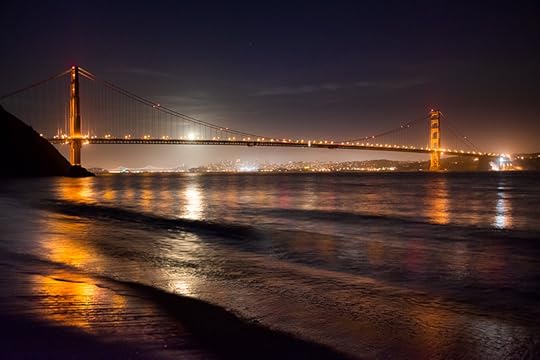
Full Moon Rising © Harold Davis
What folks have said about Harold Davis workshops and events:
“A great artist and speaker!”—W. Anglin
“Harold is genuine, generous, and gracious – He has a world of knowledge and expertise that he loves to share – his wonderful books show his monumental talents and skill set- his workshops shows the depth of his connecting with others in a very real and personal way.”—P. Borrelli
“Awesome! He patiently addressed questions from the audience which contained photographers of all levels , molding his answers to the level of understanding for each of us. His presentations covered a wonderful range of technical knowledge as well as emphasizing the need for images to have an emotional quality. The images he shares are breathtaking and he is generous in sharing many facets of how he captures such beauty.”—J. Phillips
“Not all photographers are good verbal communicators. Harold is someone who can DO and TEACH. A rare combination of talents.”—B. Sawyer
“Inspiring!”
“He was very giving of his talents and time. The course was very organized and thorough. Loved it! Learned so much! … I also wanted to let you know that I have more than paid the cost of the workshops I’ve done with you by selling some photos! I have sold three prints already.”—L. Beck
“Very creative and a marvelous instructor.”—Kay S.
About Harold Davis
Harold Davis is an internationally-known digital artist and award-winning professional photographer. He is the author of many bestselling photography books including The Way of the Digital Photographer (Peachpit Press, awarded as a Top 10 Best 2013 Photography Book of the Year by Photo.net) and Creating HDR Photos (Amphoto). His Photographing Flowers (Focal Press) is a noted photography “classic,” and is rated the Best Guide to Flower Photography by Digital Photographer Magazine.
In addition to his activity as a bestselling book author, Harold Davis is an Adobe Influencer, a Moab Master printmaker and a Zeiss Lens Ambassador. Harold Davis’s work is in collections around the world. It is licensed by art publishers and others, and has appeared in numerous magazines and other publications.
Harold’s black and white prints have been described as “hauntingly beautiful” by Fine Art Printer Magazine, and his floral prints have been called “ethereal,” with “a purity and translucence that borders on spiritual” by Popular Photography.
Recently Harold Davis’s work has been exhibited in venues including Photokina in Cologne, Germany, PhotoPlus Expo in New York, the Gallery Photo in Oakland, California, the Arts & Friends Gallery in Heidelberg, Germany, and the Awagami Gallery in Japan.
Harold Davis has led destination photography workshops to many locations including Paris, France; Spain and Morocco; and the ancient Bristlecone Pines of the eastern Sierra Nevada Mountains in California.
Harold’s popular online course on Craftsy.com, “Photographing Flowers”, has thousands of students. His ongoing photography workshops in partnership with institutions such as Point Reyes Field Seminars, the Center for Photographic Art in Carmel, California, and the Heidelberg Summer School of Photography are continually in demand and popular.
According to Rangefinder Magazine, Harold Davis is “a man of astonishing eclectic skills and accomplishments.”
2015 Harold Davis Workshops & Events
2015.01.27—Presentation at the Peninsula Photo Club. Click here to download the PDF flier for the event.
2015.02.20 – 2015.02.22—Night Photography in San Francisco, weekend workshop, click here for registration.
2015.03.14 – 2015.03.15—Black & White Masterclass, weekend workshop, click here for registration.
2015.05.9 – 2015.05.10—The Creative Portfolio Workshop,weekend workshop, click here for registration.
2015.05.15 – 2015.05.17—Wildflowers and Seascapes, a weekend of photography sponsored by Point Reyes Field Seminars. Click here for more information, and here for registration.
2015.06.14-2015.06.23—Exploring Prague, Vienna and Budapest with our Cameras, click here for Prospectus and Itinerary, here for registration instructions, and here for the registration form.
2015.06.25 – 2015.06.28—Creative Flower Photography with Photographing Flowers for Transparency on a Lightbox at Heidelberg Summer School of Photography, Germany
2015.07.02 – 2015.07.05—Digital Black & White at Heidelberg Summer School of Photography, Germany
2015.08.02 – 2015.08.07—Creative Flower Photography with Photographing Flowers for Transparency on a Lightbox at Maine Media Workshops. Please click here for information and registration.
October, 2015—Sea-Girt Villages of Italy Photographic Adventure with Harold Davis. 15 days, limited size group of photographers, destinations include Cinque Terre, Naples, Capri, Anacapri, Positano and the Amalfi coast. Sunday Wenesday October 28, 2015 (leave US October 27) through Wednesday November 11, 2015. Click here for Prospectus and itinerary, here for registration instructions, and here for the registration form.
Harold’s workshops are often sold-out, and fill up quickly. To avoid disappointment, please register early. Feel free to contact Harold Davis if you have any questions about our workshops! Please also consider Harold’s online webinar recordings and his Photographing Flowers course with Craftsy. We arrange many of our workshops and events using the Photography with Harold Davis Meetup group. Click here for Group and Workshop reviews on Meetup. Please subscribe to our list and/or blog feed for early notification about new workshop offerings.
Click here for current information about Harold Davis Workshops and Events!
January 20, 2015
Face of the Deep
On a cloudy late afternoon I stood on the Great Beach of Point Reyes, California, watching the roiling surf that had made its way across the empty miles of the open Pacific Ocean. Sky, spray, and waves seemed to blend tumultuously as the light faded.
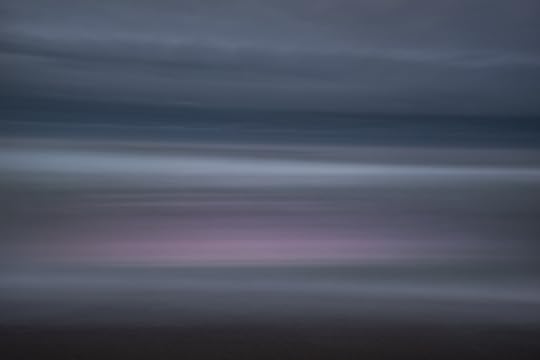
Waves Long Exposure 1 © Harold Davis
“Darkness was upon the face of the deep” goes the creation story in the Book of Genesis. From the oceans came life, and the first to come may be the last to go. In this teaming world there is still plenty of mystery in the deep—threatened by greed and rapacity like all environments, but still wild and wonderful.

Waves Long Exposure 2 © Harold Davis
I like to make images that use photography to reveal things that are not normally seen. The deep—the ocean—has so many faces. At a fast shutter speed, with the camera diaphragm open for a very short duration, the spray of water is crisply stopped in mid-air, down to the droplets, flicking off the wave (click here for two example photos at the bottom of the linked story).

Waves Long Exposure 3 © Harold Davis
Lengthening the duration of time the shutter is open smooths out the waves. Fast moving, crashing rollers become dreamlike when the camera helps you “see” their motion “graphed” over a second or two. You can check out this effect, also shot on Point Reyes, by clicking here.
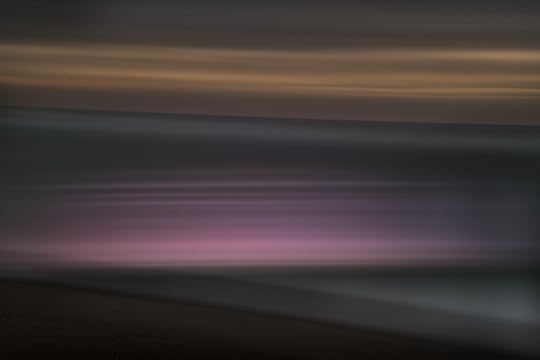
Waves Long Exposure 5 © Harold Davis
Things are not always what they appear. What is the face of the deep? There is void, there is fullness, there is wonder: more facets visually and conceptually than we can truly encompass. The world is an amazing and wonderful place. The camera is but a paintbrush to help us know the face of the deep and does not always reflect the eye of the creator.

Waves Long Exposure 6 © Harold Davis
So musing on these things, I experimented with really long exposures. As the light faded, I dialed my ISO as low as it could go, to ISO 32, stopped the lens down to its smallest aperture, and exposed these images for several minutes each. The waves become abstracted layers. We humans can look on the chaotic scene of breaking surf and spray and explore it as a serene manifestation of the rapture of the deep.
January 15, 2015
Making the Artisanal Inkjet Print
I was recently asked by an art gallerist I work with to help educate some clients regarding my printmaking. Essentially the issues come down to exploring how my prints differ from mass-produced inkjet prints, since largely the same equipment is used. In contrast to those you get from Costco or giclees from an art reproduction company, my prints require a great deal of hand labor. My FAQ: Prints by Harold Davis covers much of this ground, and I also think the following discussion helps put things in perspective.
What printer do you use?
We own a number of inkjet printers, and have worked extensively with both Canon and Epson printers. But I am happiest so far with my Epson Stylus Pro 9900. This is a behemoth of a printer that occupies the room in our house formerly known as the dining room! It is shown below a while back when it was first delivered.
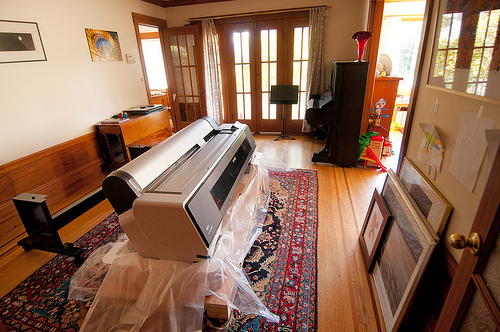
Epson 9900 printer in its new home! © Harold Davis
Prints from a high-end inkjet printer such as the Epson 9900 go by a variety of names, including:
Inkjet print —I think you’d rather suspect this term would be in use;
Pigment print —the printer lays down pigment rather than altering an emulsion as in traditional photographic printing;
Giclee —named after the French verb gicier, “to spurt,” a neologism specifically coined to avoid the “stigma” of being called an inkjet print; and
Piezo print —named after the kind of print head that is in the printer.
Personally, I don’t think there is much in the name, and all these terms mean the same thing. After all, a rose by any other name is still a rose, and all that. Overall, I tend to favor “pigment print”.

Close-up of my hand signature
The widespread confusion of terminology relates to the incredible spectrum of uses for this technology: You can buy inkjet prints at Costco, where they are honestly labeled, you can buy the somewhat pretentiously named giclee prints from companies that reproduce art, and you can collect one-off artisanal pigment prints from solo artists such as Harold Davis who make these prints one at a time in their studio.
The difference between these various uses isn’t really the gear that is involved, just as the difference between mediocre and great photography is rarely the gear the photographer uses. Quality in digital printmaking really comes down to knowing the quirks of the printer, understanding how to get the most out of digital workflow, how the technology is used, the vision behind the printmaking, and the care and time that is spent on each individual image.
I would emphasize the point that in my opinion just as much craft, skill, and artistry goes into making a good artisanal digital inkjet print as ever went into a print made in the chemical darkroom. The vision and care required are much the same, but the specific skills required are different.
What papers do you use?
I love paper in all its types and manifestations, and am constantly playing with and experimenting with paper from various sources. That said, I am mighty partial to papers by Moab from Legion Paper. (Full disclosure, I am a Moab Master and have a very cordial relationship with the great folks at Moab.) One thing Moab has going for its papers is that they do a great job of creating ICC printing profiles for specific printers, which helps me make the output files for the prints I want with a minimum of fuss.
I do try to match the paper I use to the image. It’s interesting, because sometimes an image will look good printed on multiple substrates, albeit with very different looks—and other times there is really only one good possibility.
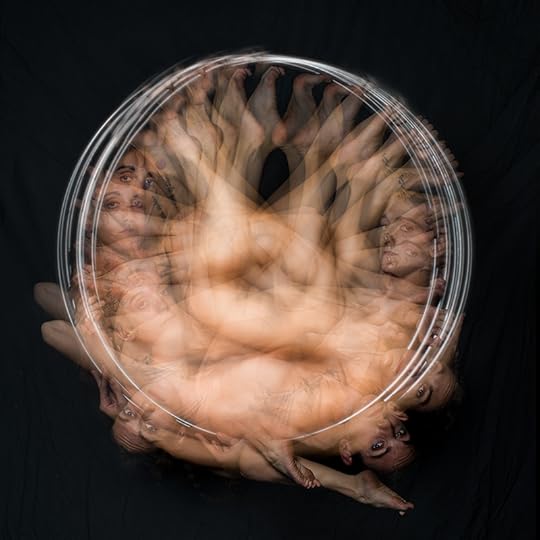
Wheel of Life (above) looks great printed on Slickrock Silver © Harold Davis
How long does it take you to make a print?
This depends on many variables, and absent a specific image file and paper it is a little hard to say. Larger prints are usually (but not always) much harder to print than smaller prints. Prints with a great deal of black can be hard to print (because they show flaws easily), as can prints with a white background (because dust and other problems show up).
Some papers are simply tougher to handle than others. Examples of paper that have some delicate handling characteristics include Moab Slickrock Silver and Awagami Unryu. These substrates are unique and beautiful, but sometimes beauty has its payback—in this case, these papers require extra attention as they go through and come out of the printing process.
If you include output file preparation, printing, and post-printing issues, an average print might take something like five to ten hours, in some cases a bit less, and in some cases much more: Sometimes I have to print an image 20 times until it is right and I get that one good print.
The take-away should be that considerable effort and time goes into every print that I make. There is no such thing as “mass printing” in my studio. Of course, this leaves out the hours or weeks it may take me to make my images in the first place.

Peonies mon amour makes a great print on Unryu © Harold Davis
Are your prints in limited editions?
The concept of a limited edition comes from traditional non-photographic printmaking. In a tradition that evolved from the nineteenth century, first one made an etching plate, or lithographic stone, then ran off prints using the plate or stone. When the edition was complete with 100 prints or so, the plate or stone was canceled or destroyed so that no more prints could be made. The point of this kind of limited edition was that a given plate or stone could only support a certain number of copies on press before it started to deteriorate and wear out, and also of course to indicate the scarcity of the print.
To me, this kind of limited edition makes relatively little sense with photography. You could even say, “limited” sense, or no sense at all.
Unless one is willing to destroy the original image file (which I, and most photographers, are certainly
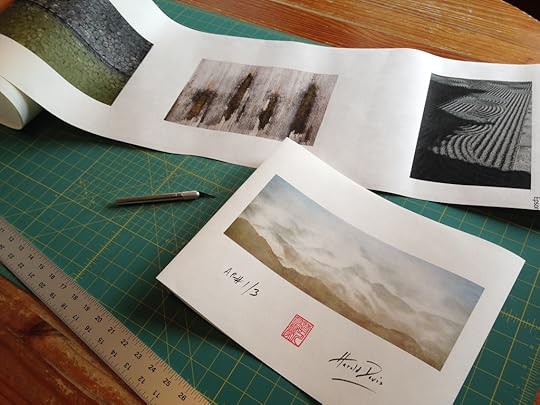
Kumano kodo portfolio under construction © Harold Davos
not willing to do), it almost smacks of deception. Here’s why: It has been common with a really popular images for the photographer to switch a detail slightly, for example make the image slightly larger or smaller, and then keep making prints when the original-sized edition runs out of print numbers. This makes no real sense to me and doesn’t seem right.
What I affirmatively do is keep track of my prints. That way, I can look up how many copies have been printed of any image. Knowledgeable gallerists and collectors I have discussed this with tell me that this provides them with all they really need—a good sense of how many of a given print have been made. From there they can derive information about how popular and/or scarce a given print is.
Note that on the other hand I do produce portfolios in limited editions. In the case of a limited edition portfolio, the fact that it is limited shows how much hand effort goes into each one made. Examples of limited edition portfolios include my Botanique, Monochromatic Visions, and Kumano kodo portfolios. It’s important to be clear with these portfolios that it is the portfolio—and not the prints—that is part of a limited edition.
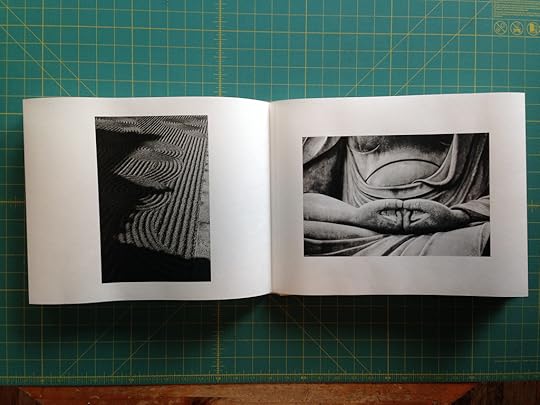
Prints from the Kumano kodo portfolio © Harold Davis
Do you hand-sign or digitally sign your prints?
To digitally sign a print means to add a signature within the computer file used to make the print. Hand-signing means that each print is individually signed using either a pencil or pen. All of my prints that are intended for art galleries or collectors are hand signed.
I use an archival pigment stylus for prints on paper where the signature will work best with ink, and a nice sharp art pencil (usually HB grade) for substrates where ink wouldn’t be best, such as Japanese washi.
It’s very easy to tell the difference between digital signatures and hand signatures; usually one can spot the difference at a glance.
Is a certificate of authenticity available?
Yes, a Certificate of Authenticity is available for prints purchased from my studio on request at the time of purchase.
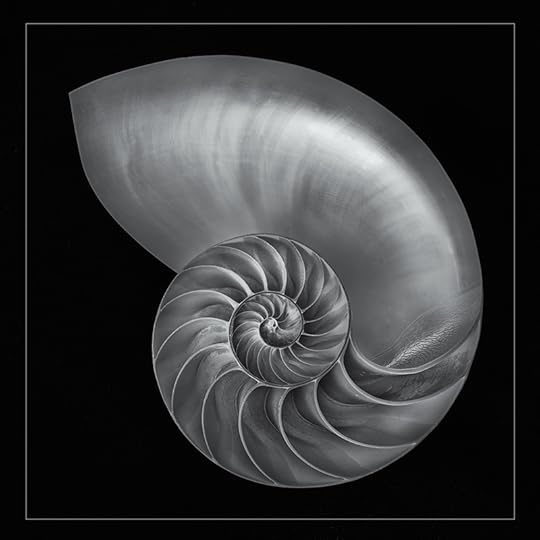
Nautilus © Harold Davis
Photographing Flowers for Transparency presentation Jan 27
I’ll be showing my botanical work and explaining “How to Photograph Flowers for Transparency on a Light Box” at the Peninsula Camera Club in San Mateo, CA on January 27, 2015 at 7:15PM. The presentation is open to the public with a requested donation. Click here to download the PDF flier for the event; more details can also be found below.

Tulip Pano © Harold Davis
What: In this presentation, Harold Davis shows the techniques he pioneered to create his floral masterpieces. Arrangement, composition, photography, and post-production will all be discussed, as will Harold’s special techniques for shooting on a light box. Please check out the PDF flier for more details.
Harold’s presentation will be followed by a Q&A session.
Where: Central Park Recreation Center, 50 E 5th Ave, San Mateo, CA 94401
When: Tuesday, January 27th 2015 – ( 7:15 – 9:00 pm )
Cost: The event is open to the public; however, a donation is requested to help defray camera club expenses.
January 13, 2015
Night Light
Click here for information and registration, and here for a PDF download of this e-Card. Click here for Harold Davis Workshops & Events.
In a letter to his brother Theo, the great artist Vincent van Gogh wrote, “It often seems to me that the night is much more alive and richly colored than the day.” The advent of digital photography has revolutionized the practice of night photography because a digital sensor can record the spectacular colors of the night. These colors are created by light waves in spectrums that are invisible to the naked human eye. For the first time we can truly “see” the world of the night around us.
Night covers the globe half the time and—surprising to many—photographic opportunities with digital equipment are as exciting at night as they are during the day. Join night photographer Harold Davis, the author of Creative Night: Digital Photo Tips & Techniques, a book explaining night photography techniques and 100 Views of the Golden Gate, a book celebrating the visual glories of San Francisco’s iconic structure, as we explore the freedom of the night in the glorious surroundings of San Francisco.
What: Night Photography in San Francisco with Harold Davis
When: Feb 20-22, 2015
Where: Berkeley, CA (classroom sessions); field locations around the San Francisco Bay area
Tuition and registration: $695; click here for registration, information, and detailed curriculum. Note: Registration is by a YES RSVP and Paypal payment on Meetup; if you prefer to register privately simply contact us.
Workshop size: Maximum 12 participants
Field locations: Depend on conditions and group inclinations, may include Berkeley Pier, Oakland Waterfront Park, Mare Island, Marin Headlands, Golden Gate Bridge, Kirby Cover, Lombard Street curves, San Francisco waterfront and Bay Bridge

Full Moon Rising © Harold Davis
January 12, 2015
Simplicity
Sometimes simplicity is best, although simplicity can be hard to achieve. Both visually and technically, simple images give you no place to hide. In other words, complexity can hide problems, whereas simplicity does not. In a visually simple image, if you’ve done something wrong it usually hangs out for all the world to see. But when a simple image works—like these flowers shot for high-key transparency on a light box—the results can be compelling and have a special elegance and poetry.

Pink Tulip on the Verge of Opening © Harold Davis
Both images photographed in RAW at 36MP with Nikon D810 camera and Zeiss 100mm f/2 macro lens over the past weekend. Above: ISO 64, f/16, three blended exposures from 1/2 of a second to 2 seconds. Below: ISO 64, f/22, three blended exposures from 1/2 of a second to 3 seconds.
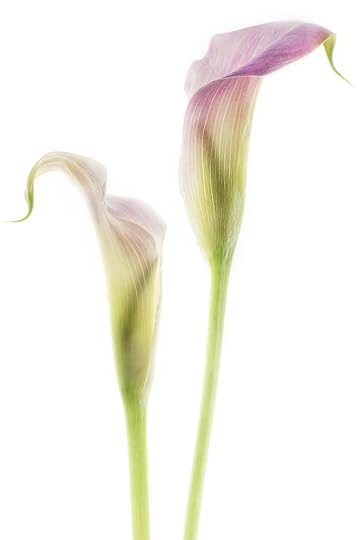
Calla Lilies © Harold Davis
January 11, 2015
Serendipity and photography
Click here to download a PDF version of this e-Card, here for Workshops & Events, and here for Harold’s blog.


